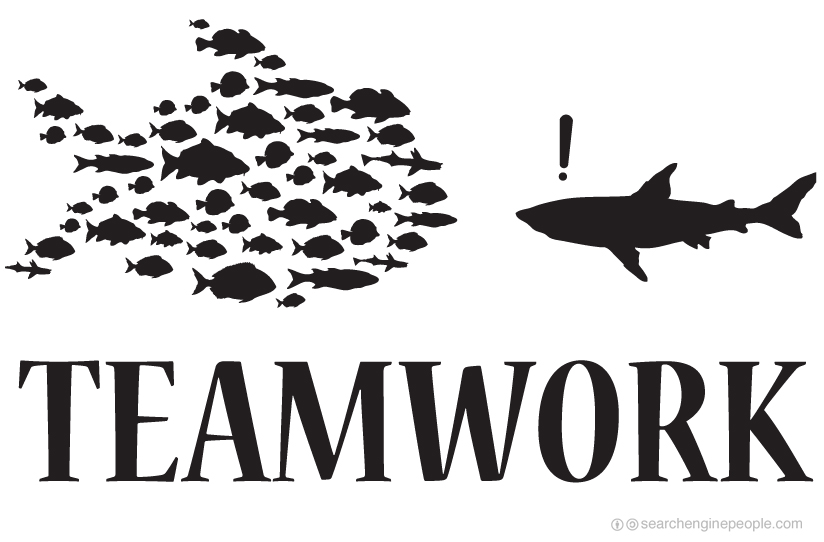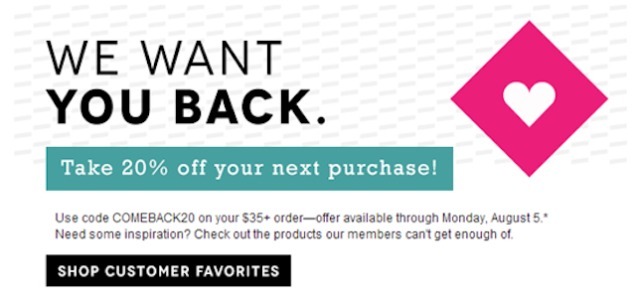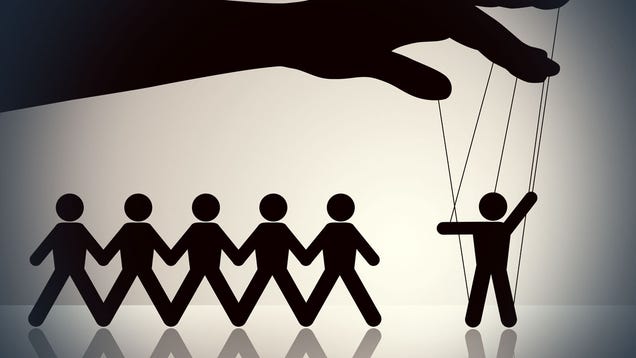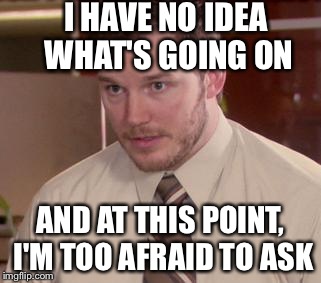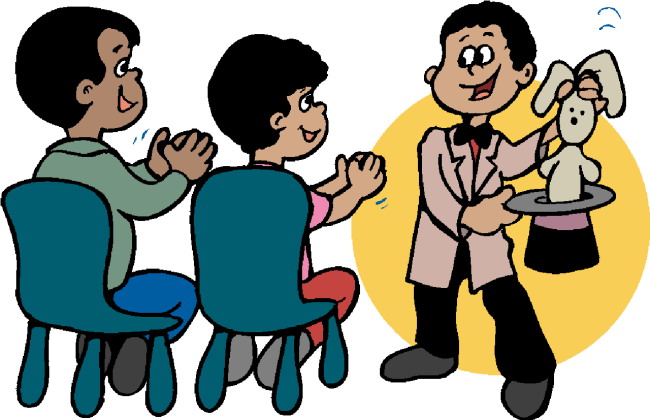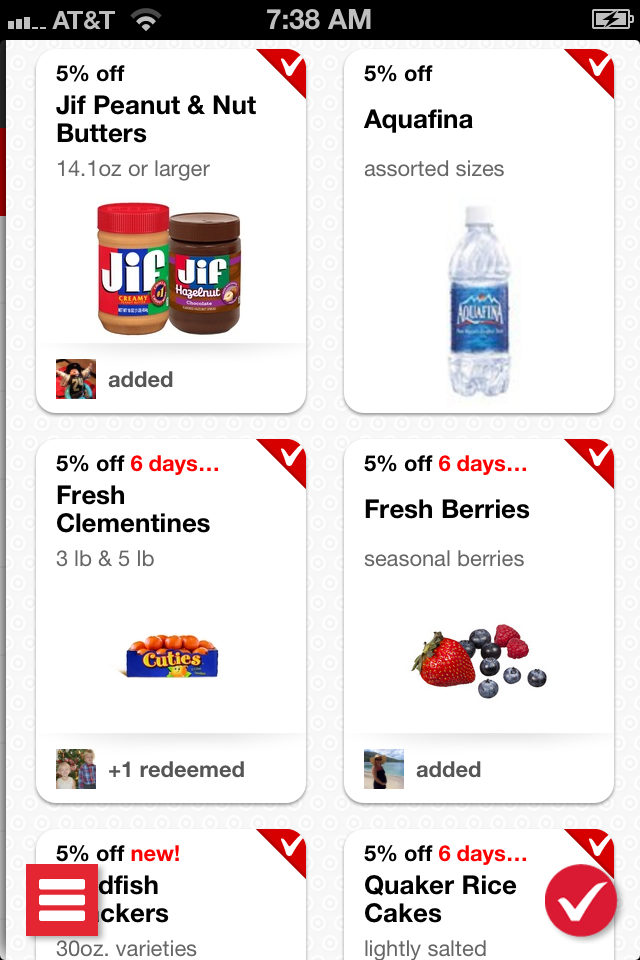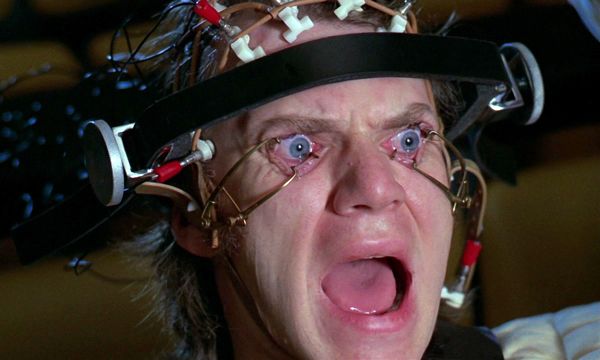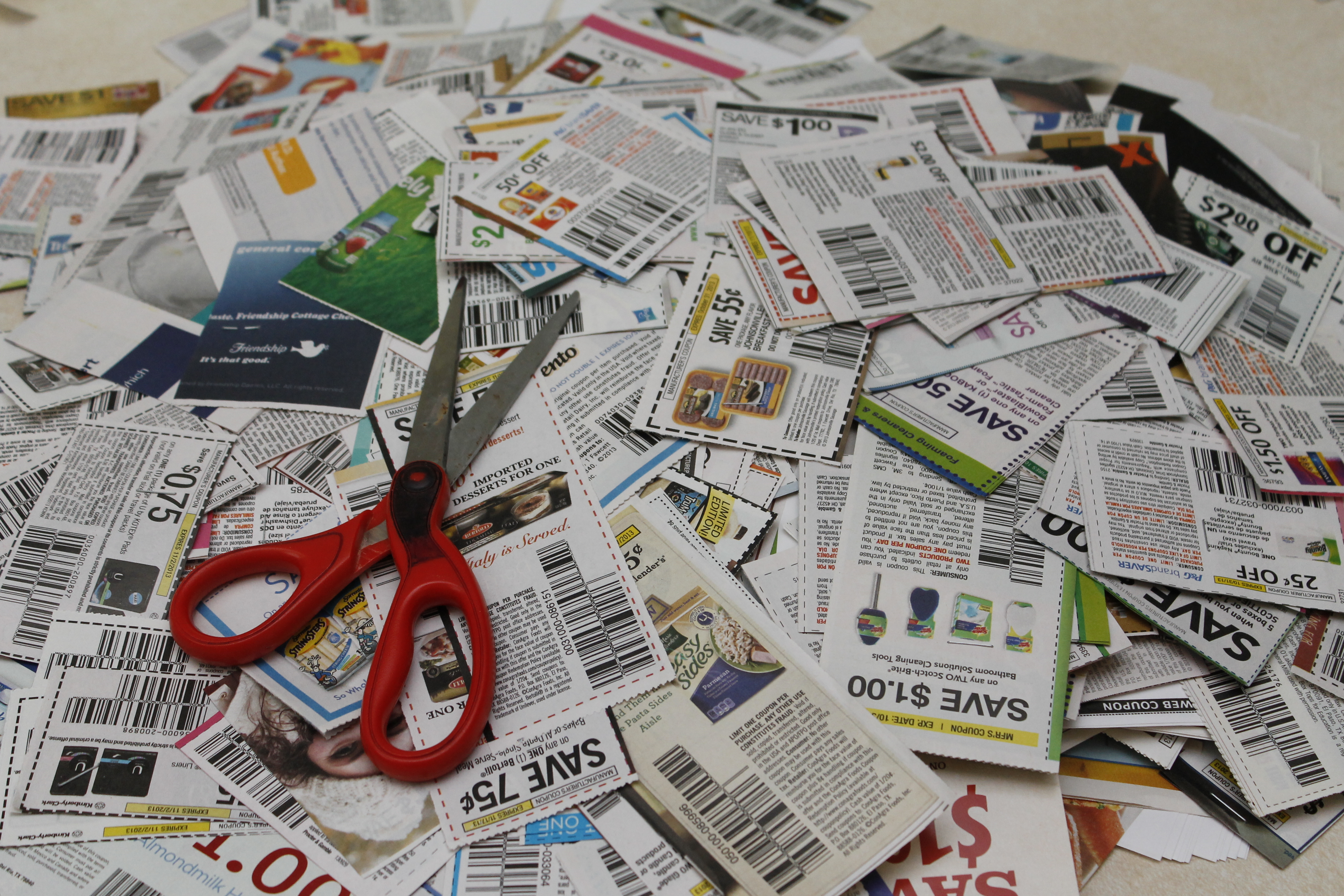It's a while since the last post. With that in mind, I think a quick update is in order before we get into the topic for today. Over the last few months we have been working diligently to get our new loyalty program built. It has been a ton of work but has been extremely gratifying to see it come together. I'm proud to announce we have our first business clients live as we speak with more coming on soon. It is so exciting to start to see things starting to work and it's even more excited to be getting great feedback from everyone we have talked to. More to come soon!
Now, today I want to talk about teamwork. This is a very fundamental part of retail, business, and life in general. Chances are you have used and currently use teamwork in about everything you do. As much as we would like to sometimes, we can't do it all ourselves. Take our loyalty program for example. It takes multiple with people with different skill set to get things built. Perhaps just one of us could do it, but the time to learn skills, the time to develop them to an acceptable level, and then the time to build stuff would extent the process by years. Just like with building software, working together makes sense. That might seem trite, but there isn't nearly as much collaboration between businesses and customers as we (customers) would all like to think.
Conventional loyalty programs are a great example of this. The business offers you something (usually a discount or something free) for a certain level of usage. Maybe its 10 purchases or $100 spent. It often gets framed as a way to show customers they are valuable, but thats not the whole truth. In previous posts we have gotten into the math behind these programs so we won't rehash that again, in general, loyalty programs are intended to make customers spend more than they normally would or shop more frequently then normal. They have all done the math (hopefully) and figured out that they actually make more if they give you the 10th coffee free because to get to that free one (the only one that costs them anything), you had to buy 9 at full price. If you would normally have only bought 2 or 3, they just created a big jump in your spending.
That sounds a little nefarious and to be honest, I think it is a bit unethical. It seems unfair to trick customers into buying patterns with the goal of creating, dare I say, dependent consumers. This isn't to say that businesses are the bad guys our to rob you blind, but there is definitely an imbalance. Right now the power balance between customers and business is about 75%:25% businesses:customers. We are advocating shifting this balance back to square.
What does that balance look like? Without any examples in the market today, how do we reach that balance? The answer is (as you might have guessed) is teamwork. We need to increase collaboration between customers and businesses.
Customers and businesses create all this great information that is very useful. Think of it like a puzzle and each party creates different pieces. Customers create the highly detailed transaction data points that create the bigger picture while businesses create the macro trends based on these data points. When you think about it though, each business is building a small picture based only on the transactions made with them. This result in lots of consumers creating lots of information that no one can fully leverage. Our goal is to help everyone leverage it.
Imagine a world where you could get rewarded from any business on a purchase from any other business without any spammy nonsense. Image a world where all your rewards and loyalty were earned and collected without you having to lift a finger and all you had to do was use the rewards. We want everyone to have their own automatically generating bank of rewards right on their phone. By sharing just basic information about where you shop and how much you spent, people can create their own rewards that better match what they care about. Handling rewards and loyalty this way is great for businesses too.
One of the biggest challenges for marketers in conversion. They have a very difficult time getting the right things to the right people. If you are a business owner, imagine a world where you could market only to people who shopped at specific businesses. Imagine if every single dollar you sent out actually when to a customer who cares. This results in saving money on marketing while getting much better engagement from potential customers. It would help you drive new, highly qualified traffic which is exactly what every business needs.
The moral of the story is that working together helps both businesses and customers. Rather than trying to control the customers, lets let the customers have more control over themselves. At the end of the day, the only sustainable way to make a change is to have something that is mutually beneficial. We are extremely excited to be hearing that this is exactly what we are accomplishing with our new approach. Get in touch is you are interested in learning more!
Thank you for reading!
The Scannibal Adventure
This is a blog about coupons, loyalty, and finding better ways to save money. Customers and businesses waste so much time and money in the chaos of marketing that there has to be a better way. We have found one.
Wednesday, March 2, 2016
Monday, November 9, 2015
You should think coupons are a joke
The premise of coupons is logical from a mechanical, business standpoint in which customers are influencable data points, but customers are humans and should just laugh when they see these things. While I know that billions of dollars have gone into understanding the human brain so coupons and can be "engineered" to appeal to consumers, it still seems silly that more people don't see how manipulative they are. The goal is not actually customer value unless we are to believe that all businesses are truly and purely motivated by their core belief that their product really does fix everyones problem. While some of them fall into this category, I think that's giving most businesses way too much credit.
We have talked about what a coupon is a million times. A coupon is a tool used by businesses to influence consumer buying behavior by creating a temporary way to alter the perceived value of a good or service. Almost 100% of the time, businesses have pre-negotiated with vendors, pre-planned, and thoroughly mapped out how to change prices without affecting their bottom line.
A good example of this is when business plans on issuing a coupon for a product, so they release it at a higher price. Let's take two hypothetical situations:
1) A book's retail price is $10. The book has no coupons
2) The same book's retail price is $15 dollar's and the seller gives out "$5 off" coupons
In the first case, the customer is presented with a fair and reasonable price for the book. The consumer is left alone to decide whether the book is a good or bad value at $10. This is the way is should be: the consumer is the one with most of the power. The consumer is left to make a decision based on the actual value of the item.
However, let's look at the second situation in which the consumer pays the same price for the same book, but was given a coupon. In the second case, new variables are added into the equation that completely shift power away from the buyer and give it to the seller: perceived value and urgency. First, the normal price of the book is more expensive. This means subconsciously it seems more valuable. Second, the coupon is for $5! That is a huge discount, right? Third, it expires this week so if the consumer wants to take advantage of this exclusive opportunity to have something supposedly worth $15 dollars for $10, they better buy now!
The end result is that the coupon adds false value to the product just for the purpose of lying to the customer and getting them to make a rushed, emotional decision rather than a value-based, rational decision. Am I the only one that thinks that seems unethical?
With that I'd like to leave you with a few questions to think about:
We have talked about what a coupon is a million times. A coupon is a tool used by businesses to influence consumer buying behavior by creating a temporary way to alter the perceived value of a good or service. Almost 100% of the time, businesses have pre-negotiated with vendors, pre-planned, and thoroughly mapped out how to change prices without affecting their bottom line.
A good example of this is when business plans on issuing a coupon for a product, so they release it at a higher price. Let's take two hypothetical situations:
1) A book's retail price is $10. The book has no coupons
2) The same book's retail price is $15 dollar's and the seller gives out "$5 off" coupons
In the first case, the customer is presented with a fair and reasonable price for the book. The consumer is left alone to decide whether the book is a good or bad value at $10. This is the way is should be: the consumer is the one with most of the power. The consumer is left to make a decision based on the actual value of the item.
However, let's look at the second situation in which the consumer pays the same price for the same book, but was given a coupon. In the second case, new variables are added into the equation that completely shift power away from the buyer and give it to the seller: perceived value and urgency. First, the normal price of the book is more expensive. This means subconsciously it seems more valuable. Second, the coupon is for $5! That is a huge discount, right? Third, it expires this week so if the consumer wants to take advantage of this exclusive opportunity to have something supposedly worth $15 dollars for $10, they better buy now!
The end result is that the coupon adds false value to the product just for the purpose of lying to the customer and getting them to make a rushed, emotional decision rather than a value-based, rational decision. Am I the only one that thinks that seems unethical?
With that I'd like to leave you with a few questions to think about:
- Would you rather a business put its best foot forward and let you decide what to buy or tries to manipulate your decision-making process?
- Do you really want to buy products from companies that would rather trick you than let their products speak for themselves?
Food for thought.
Thanks for reading!
Chris@scannibal
Thursday, October 29, 2015
What if you could participate in marketing?
I think most of us would agree that we are pretty much passive recipients of marketing. 99.9% of the "marketing" in the world in flying toward your face at 1,000mph from every single direction. We ran a 5k last weekend and a guy ran the whole race in a giant BMW logo suit...he was most likely paid by BMW. This sounds like an extreme example of throwing ads at customers, but its actually becoming fairly common. Even the replays on the Sunday football games are "brought to you by XYZ Corporation". The point is, it's everywhere and consumers have almost no control over how they are exposed to it.
Let's look at how this stuff gets there. In case you aren't a marketing expert, here is essentially how it works in very broad strokes: Businesses have a general idea of who they think their customers are. They do research to find out where those people go, what they do, and what they like. That company then looks for all the points where they can potentially get in front of those customers. This used to just mean on buses or billboards, but as there are more companies jockeying for space, things get crowded and some of them get clever. This is how you end up with car emblems running 5ks. Some marketing guy decided their "target customer" likes running 5k so they paid some kid to wear a suit and go for a jog. Seems silly, but it obviously got my attention.
Since we are so used to seeing ads, most of us don't even think about it anymore. Ads are just a part of life, a standard decoration on just about everything, and something we have nothing to do with. In fact, this is how most of the free things you use get paid for. Do you think watching football on Sundays is free? Not a chance. The advertising is what pays for the air time. In reality, celebrities and sports stars are valuable because they get people to watch them and thereby create opportunities to put adds in front of your eyeballs. Tricky.
But what if that wasn't how we had to think about advertising? All the companies are trying to get our attention, but something weird is going on. Instead of just asking for it, they are building all kinds of complex models to predict what we want, how to get our attention, and how to get us to buy. What if they did something really novel to get our attention and...I don't know just asked us for it?
We are building a way for customers to become active participants in marketing. This might sound complex or boring, but its actually pretty simple. We think that instead of businesses throwing things at us, it would be much more efficient for both of us if there was a way to tell businesses what we want. Our whole goal with Scannibal is to make the conventionally obnoxious and tedious world of advertising, coupons, and loyalty programs somethings that actually creates value for everyone. Businesses don't like wasting money on spam fliers anymore than we like receiving them. There is a better way.
We are getting ready to launch our beta in the area near the University of Denver. Sign up at scannibal.com to get an invite!
Thanks for reading!
Let's look at how this stuff gets there. In case you aren't a marketing expert, here is essentially how it works in very broad strokes: Businesses have a general idea of who they think their customers are. They do research to find out where those people go, what they do, and what they like. That company then looks for all the points where they can potentially get in front of those customers. This used to just mean on buses or billboards, but as there are more companies jockeying for space, things get crowded and some of them get clever. This is how you end up with car emblems running 5ks. Some marketing guy decided their "target customer" likes running 5k so they paid some kid to wear a suit and go for a jog. Seems silly, but it obviously got my attention.
Since we are so used to seeing ads, most of us don't even think about it anymore. Ads are just a part of life, a standard decoration on just about everything, and something we have nothing to do with. In fact, this is how most of the free things you use get paid for. Do you think watching football on Sundays is free? Not a chance. The advertising is what pays for the air time. In reality, celebrities and sports stars are valuable because they get people to watch them and thereby create opportunities to put adds in front of your eyeballs. Tricky.
But what if that wasn't how we had to think about advertising? All the companies are trying to get our attention, but something weird is going on. Instead of just asking for it, they are building all kinds of complex models to predict what we want, how to get our attention, and how to get us to buy. What if they did something really novel to get our attention and...I don't know just asked us for it?
We are building a way for customers to become active participants in marketing. This might sound complex or boring, but its actually pretty simple. We think that instead of businesses throwing things at us, it would be much more efficient for both of us if there was a way to tell businesses what we want. Our whole goal with Scannibal is to make the conventionally obnoxious and tedious world of advertising, coupons, and loyalty programs somethings that actually creates value for everyone. Businesses don't like wasting money on spam fliers anymore than we like receiving them. There is a better way.
We are getting ready to launch our beta in the area near the University of Denver. Sign up at scannibal.com to get an invite!
Thanks for reading!
Sunday, September 6, 2015
The Secret Life of Coupons
1. What is a coupon?
2. Who makes the coupons?
3. Why do I use them?
4. Why do the people who make them want me to use them?
These seem silly, I know, but in the highly scientific and highly calculated marketing world we live in, sometime the real answers get lost. With that in mind, lets try to answer them.
1. What is a coupon?
Convention wisdom says coupons are a bunch of pages in the paper that you can use to save money on stuff. You cut them out, take them in, and get a discount. These days this applies to any mobile or internet coupons too, but the general idea is the same. Coupons are ways to save money, right? Wrong. Coupons are a tactic. The truth is that almost every coupons you see has been carefully calculated and the price adjusted to account for the "discount". Buying a DVD for $15.00 using a $5.00 coupon is only a good deal if the movie is actually worth $20.00. But what if the movie is only worth $15.00 and we just got tricked into thinking it was a good value? This brings us to our next question.
2. Who makes the coupons?
Again, seems simple but we rarely think of the "who" in terms of motives. Brands and retailers are the ones who issue coupons. This means the people who want us to buy their products are the ones determining what "value" means. Isn't that a little strange that we are trusting them to set the value AND letting them adjust that perceived value to introduce a sense of urgency or scarcity for their items? These coupons are starting to sound more like optical illusions than ways to save.
3. Why do they want me to use them?
The first thing that might roll off your tongue is "They want me to save money on their product so I'll buy it instead of something else." This is somewhat true in a very broad sense, but we would need to change it to "They want me to THINK i'm savings money..." As we said before, it's just a fact of life that businesses have promotional budgets and adjust prices to cover discounts. Aside from clearance, big discounts just mean the price was over inflated to begin with.
So with our understanding that coupons are budgeted tools to change our perception of a product without affecting the actual value of the good, why do they want us to use them? The answer is exposure. For instance, say you hear that there is a coupons to get a $100.00 pair of headphones for 50% off. We don't really need headphones and aren't even considering any that are regularly $50.00, but these are 50% off! You scour the papers and internet looking for this coupon because the headphones are half price! Well we know that the actual value of the headphones is probably well below the full retail, the business wouldn't sell them to us otherwise.
Once we spend half an hour, we find the coupon and go buy the headphones and think we got a steal. That coupon has done three things: 1) effectively driven us to make a purchase we didn't plan on and didn't need 2) effectively changed our perception of $50.00 from being expensive, to being cheap 3) gotten us to willingly and actively engage with their brand for an extended amount of time. The key is the last one. Getting someone to think actively about your brand for half an hour goes miles toward building a repeat customer. Interesting, isn't it.
4. Why do we use them?
This part is key because there are two major categories of users when it comes to coupons: "Savers" and "Engagers". As we look at each I encourage you to be honest with yourself about which one you are. Your motivations are likely very different for one versus the other.
"Savers" are the people who are after that discount. They tend to like more general and easily accessible coupons. This is the lower involvement, more casual of the two whose primary driver is to increase the sense of "value" they get from shopping. Sometimes this will mean using a coupon only on big purchases or only ones they just happen to see, but the key is that "savers" use it to supplement shopping rather than use coupons to define their shopping.
"Engagers" may often think they are using coupons to save, but are likely driven more by the engagement they feel with the brand through the use of the coupons. These people are the ones who spend hours looking for very specific coupons and pride themselves on maximizing the amount they save. While these people will likely save more, I would argue that their motives have nothing to do with money. The engager seeks the sense of empowerment and superiority they feel over the brand by having "beat the system". The time spent is often a good indicator. There are very few instances in which the savings from intense coupon usage will outweigh the value of the time spent (in a conventional sense). It's important to note that there is nothing wrong with this reasoning. There is more to life than money and engagers do it because they enjoy it, just not for the reasons we would suspect.
After taking a shot at figuring out which one you are, how do you think that relates to your personal coupon habits or shopping habits in general? What are your real motives?
Conclusion
With all of this in mind, the important things to think about with coupons are being aware and balance. Focusing on the first will make the second come naturally. Next time you are cutting or printing, think about how and why the brand is trying to connect with you. Think about what you want out of it and what they want out of it. Paying attention to these things could save you tons of time and money while also making you a much smarter shopper. Coupons are often not what they seem and just being aware of that will be helpful next time you head to the store.
Thanks for reading!
Chris@scannibal
Monday, August 31, 2015
Review of Cartwheel, the savings app by Target
If you are not familiar with it, "Cartwheel" is the savings app owned by Target. They took a little bit of a different spin than most of the other apps out there. While most revolve just collecting coupons or earning points, Cartwheel works a bit differently.
Once you have collected all of the offers you want, you go back to your home screen. The app generates your own personal bar code that the cashier will scan at the register. This is cool because it saves you the trouble of scanning all the individual offers. Each offer in your slots is all tied back to this one bar code so you have just the one code to scan no matter what your offers are or how many you have.
After the cashier scans the code, the dollars come right off of the actual transaction while it happens. Being able to do this in real time is something that most of the other apps cannot do. It is convenient, but the only reason they can do it is the ability to tie so directly into their sales software. This means that this same kind of "real time" savings is almost impossible for any app that crosses over retailers. Since this app is just for Target, it's convenient but is obviously limited in terms of usage. Every time you use an offer, the amount you save will be added to your total so you can see how much you have saved over time. As you save, you earn more slots for offers and you earn badges as you reach certain levels.
I also like that everything is on one bar code. While you still need to put the time in to find the offers, you can at least easily redeem them (if you can find the items and remember to scan). This is definitely a step in the right direction from coupons. On that same note, having it on your phone is nice so you can search, select, or change the offers right in the store (while not being convenient, it is useful)
The amount of effort need to find offer is also something to consider. Here is how my usual trip goes:
-10 mins filling slots with offers (say 15 slots)
-30 min finding the specific items in-store
-half the items are out of stock or I cannot find them
-15 min in-store looking like an idiot on my phone trying to find different offers
-15 min finding the new items
-Cashier won't remind you to use Cartwheel so I forget to scan about 25% of the time
As you can see, it can easily turn into a lot of time. I have not had a trip yet where I was able to easily and quickly find the items that corresponded with the offers I had selected. The only time it goes quick is if you spot something ahead of time and go in for that one specific item, like I did with this G Watch.
Overall, I do think Cartwheel is one of the better savings tools out there. I think it has potential to save you lots of money on the right things, but I would suggest browsing through to catch that one or two big items rather than try to nickel and dime the daily items. For me, it just isn't worth the time or effort to use regularly. I do look at it regularly to keep an eye out for smoking deals, but I stopped using it for milk and eggs. If you decide to start using Cartwheel, I suggest you look at it as a way to get a great deal every now and again rather than a long-term way to decrease grocery expenses.
Thanks for reading!
Chris@Scannibal
How it works
When you first open the app you start off with a certain number of slots to put "offers" in. You are able to search through the variety of offers and add them to one of your slots. The catch is that you can only have as many offers as you have space for. While there can be a wide range of items depending on the day you are looking, some of them can be rather narrow (buy this specific color or this specific size). However, the trade off is value for selection. The branded items tend to be more specific but much larger discounts (up to 50% off) while the more generic things like Target-brand milk or eggs, are much more open but have smaller savings (ususally 5%).Once you have collected all of the offers you want, you go back to your home screen. The app generates your own personal bar code that the cashier will scan at the register. This is cool because it saves you the trouble of scanning all the individual offers. Each offer in your slots is all tied back to this one bar code so you have just the one code to scan no matter what your offers are or how many you have.
After the cashier scans the code, the dollars come right off of the actual transaction while it happens. Being able to do this in real time is something that most of the other apps cannot do. It is convenient, but the only reason they can do it is the ability to tie so directly into their sales software. This means that this same kind of "real time" savings is almost impossible for any app that crosses over retailers. Since this app is just for Target, it's convenient but is obviously limited in terms of usage. Every time you use an offer, the amount you save will be added to your total so you can see how much you have saved over time. As you save, you earn more slots for offers and you earn badges as you reach certain levels.
The Good
There are definitely thinks I like about Cartwheel and it is probably my most used savings app. I like that there are certain items that are huge discounts. I have been using it for six months and saved about $500 but that is because I caught Rosetta Stone and a smart watch for 50% off. If you are an opportunist, these can be great.I also like that everything is on one bar code. While you still need to put the time in to find the offers, you can at least easily redeem them (if you can find the items and remember to scan). This is definitely a step in the right direction from coupons. On that same note, having it on your phone is nice so you can search, select, or change the offers right in the store (while not being convenient, it is useful)
The Bad
There are also things I do not like about the app. First, the relevance of offers is sometimes just not there. I see a ton of items that I'm guessing are going to be clearance soon and this is a last chance to move them. These are things like kids movies or baby food. While many customers do want these, I'd expect my app to understand the things I buy a bit better.The amount of effort need to find offer is also something to consider. Here is how my usual trip goes:
-10 mins filling slots with offers (say 15 slots)
-30 min finding the specific items in-store
-half the items are out of stock or I cannot find them
-15 min in-store looking like an idiot on my phone trying to find different offers
-15 min finding the new items
-Cashier won't remind you to use Cartwheel so I forget to scan about 25% of the time
As you can see, it can easily turn into a lot of time. I have not had a trip yet where I was able to easily and quickly find the items that corresponded with the offers I had selected. The only time it goes quick is if you spot something ahead of time and go in for that one specific item, like I did with this G Watch.
In Conclusion
Thanks for reading!
Chris@Scannibal
Sunday, August 23, 2015
What is your time worth?
Repetition, repetition, repetition
Passive v. Active
But what does it cost?
Steps in couponing
1. Get a paper2. Look through paper to find ad sections
3. Identify coupons of interest
4. Cut coupons
5. Read coupons for limit, exclusions, conditions, etc.
6. Go to the store
7. Remember to bring coupons
8. Find specific product the coupons pertain to
9. Make sure to buy in accordance with the coupon rules (see #5)
10. Remember to use all coupons when checking out
...That is a LOT of steps...
Now some math
Let's say there are 200 coupons in a given paper, you are actually interested in 5% of them (10 coupons), and the average discount is $1.00. So in theory, this paper is worth $10.00, right? This would be true if it were as easy as just having the coupons in hand, but unfortunately there are lots more steps between you and that $10.00. At this point you should be asking questions like "How much time will it take to get the coupons? How much is my time worth? Will I actually be able to get all $10.00 in discounts?"Here are some quick estimations of the cost in our scenario (I used the average hourly wage as an estimate of the value of time):
1. Buy the paper ~ $1.00
2. Time to locate and clip coupons in paper ~ 15 min @ $25.00/hour = $6.25
3. Extra time in the store searching for specific coupon items ~ 15 min @ $25.00 = $6.25
4. Additional dollars spent to reach minimums or limitations on the coupons ~ $2.00
Wait a minute...
In our quick example the total cost of those $10.00 in coupons is $15.50! That means using the coupons is actually costing us $5.50! Even looking at just the time involved, we would have been off spending those 30 minutes working (we would have earned $12.50 which is still $2.50 more than the $10.00 in coupons). That doesn't even account for the fact that the chances of being able to use all 10 coupons is slim. Plus, remember back to the goal being exposure? In our scenario you have now spent at least 30 minutes directly thinking about and engaging with the brand that sent out the coupon WITHOUT savings any money...Sneaky SneakyAt the end of the day, the question is whether or not the coupons are worth the time it takes to use there. There are some instances in which they do, but for the most part I would argue that conventional coupons amplify the amount of time you spend thinking about a product without actually saving you a proportionate amount of money.
What do you think about the time coupons take vs. the money they save? Do you think they are a worthwhile pursuit?
Thanks for reading!Chris
Friday, August 21, 2015
Is "Loyalty" actually a good thing?
Loyalty used to be great!
Loyalty programs started out as a great thing. It used to be that a few businesses offered what we would now call "Loyalty Programs" and they were often businesses where we didn't shop that often. They usually sold things that you wanted rather than needed and earning something felt like a treat. This makes sense. They want to encourage you to buy more than you normally would to earn the reward. At a time when there were fewer programs, earning that reward meant something.Even if you ended up buying a bit more to earn that free item, it felt special. It was almost like you were one of the VIP customers who the business wanted to have a relationship with. It made you feel valuable as a consumer. Unfortunately, we have advanced to a place where "loyalty" has turned into a key marketing metric for almost every business. This means everyone has "rewards" and everyone wants to create repeat customers. This isn't always bad, but lets look a bit deeper.
Loyalty is everywhere
Loyalty programs encourage you to become habitual. Each business wants a bigger percentage of the dollars you spend. But what happens when every single business is offering their own program? Now, as customer, you need to keep track of everyone's individual card or points or rewards. The rewards themselves become somewhat commoditized and rewards become a de facto part of buying something. Don't worry, those discounts get planned into the prices and we just end up paying a higher price to compensate for the reward we think we earned.
How do customers win?
So what do we have now? We have a type of reward system that is no longer special because everyone uses it, customers who laboriously keep track of points or rewards across zillions of different mediums, and, worst of all, a shifting mentality that making customers repetitive is a good thing. This should scare us all as customers! It does't feel great being described as "repetitive", does it? The result of us being "repetitive" is that businesses can accurately predict what we will do and therefore they don't need to offer us much value to keep us coming back. They have us on the hook. So we are getting less value while being encouraged to minimize our choices. Am I the only one who is a bit uneasy about that?Businesses should get better, not sneakier
Call me crazy, but doesn't it make more sense for the whole shopping environment if business are continually trying to improve their good or service as a means of retaining customers? Is it a good thing to have loyalty programs are used to try and compensate for businesses that have a hard time innovating or don't want to innovate? It might sound a bit dramatic, but in general I would say that as a customer, the kind of loyalty generated by conventional loyalty programs is driving value down, not up.What do you think about loyalty? Please leave a comment!
Thanks for reading!
Chris
Subscribe to:
Posts (Atom)
